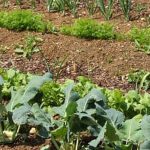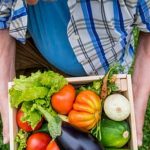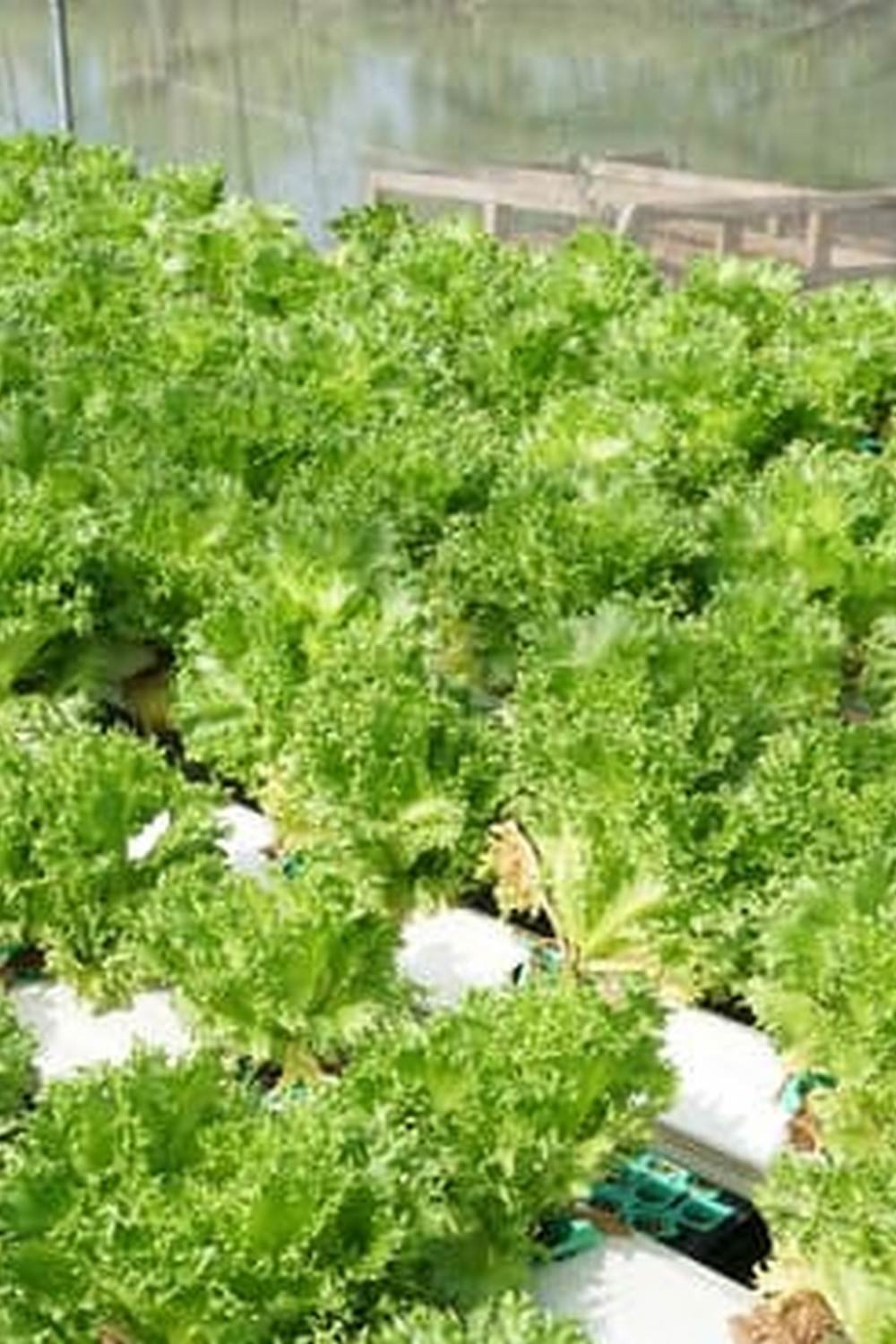Are you a mountain gardener in Zone 7A looking to make the most of fall vegetable planting? This article will provide you with all the information you need to successfully grow a bountiful harvest during the autumn season. With the right knowledge and preparation, you can create a thriving mountain garden that will yield an abundance of fresh, healthy vegetables.
In this article, we will delve into the unique challenges and opportunities that come with mountain gardening in Zone 7A during the fall season. From understanding the specific climate and soil conditions to choosing the right vegetables for your garden, we’ll cover every aspect of fall vegetable gardening in this zone. By following our expert tips and advice, you can ensure a successful and rewarding gardening experience.
Whether you’re a seasoned mountain gardener or just starting out, this article is designed to help you navigate the intricacies of fall vegetable gardening in Zone 7A. We’ll provide valuable insights into preparing your garden, planting and maintaining your crops, dealing with common pests and diseases, harvesting and storing your vegetables, and even share success stories and tips from experienced mountain gardeners in Zone 7A.
So let’s get started on your journey to a flourishing fall vegetable garden in Zone 7A.
Understanding Zone 7A
Zone 7A is a unique and challenging environment for fall vegetable gardening in the mountains. The USDA Hardiness Zone map classifies this area as having an average annual extreme minimum temperature of 0 to 5 degrees Fahrenheit. This means that gardeners in Zone 7A need to carefully consider the specific climate conditions when choosing their fall vegetables.
In addition to the cold temperatures, mountain gardening in Zone 7A also presents challenges with soil composition and planting conditions. The soil in this zone is often rocky and acidic, which can impact the success of certain vegetable plants. Gardeners must take the time to amend their soil with organic matter such as compost or peat moss to improve its texture and pH levels.
When it comes to planting conditions, mountain gardeners in Zone 7A need to be mindful of the shorter growing season due to the colder temperatures. It’s important to select fall vegetable varieties that have a shorter maturity period and can thrive in cooler weather. Additionally, proper spacing and planting depth are crucial for successful growth in this region.
Overall, understanding the specific climate, soil, and planting conditions of Zone 7A is essential for any mountain gardener looking to have a successful fall vegetable harvest. By taking these factors into account, gardeners can work towards creating a thriving garden despite the challenges posed by this unique environment.
Choosing the Right Fall Vegetables for Mountain Gardening Zone 7A
When it comes to mountain gardening in zone 7a during the fall season, choosing the right vegetables is crucial for a successful harvest. The cooler temperatures and shorter daylight hours in this climate mean that certain vegetables will thrive while others may struggle. Knowing which fall vegetables to plant in your mountain garden can make all the difference in ensuring a bountiful harvest.
Understanding the Best Vegetables for Zone 7A
In mountain gardening zone 7a, some of the best fall vegetables to consider planting include cold-hardy varieties such as kale, spinach, Swiss chard, carrots, beets, radishes, and lettuce. These vegetables are able to withstand cooler temperatures and can even tolerate light frost, making them ideal choices for the fall season in this climate. Additionally, broccoli, Brussels sprouts, and cauliflower can also be successful in zone 7a if planted early enough to allow for adequate growth before the first frost.
Considerations for Success
When selecting fall vegetables for your mountain garden in zone 7a, it’s important to consider not only the temperature but also the amount of sunlight your garden receives. Some vegetables may require more sunlight than others, so take note of how much direct sunlight your garden gets throughout the day.
Additionally, be mindful of the average first frost date in your area when planning your fall vegetable garden. Planting too late could result in a disappointing harvest if frost arrives before your crops have fully matured.
Variety Selection
Another factor to consider when choosing fall vegetables for mountain gardening zone 7a is variety selection. Look for specific varieties of each vegetable that are known to perform well in cooler temperatures and have shorter maturity dates. For example, look for quick-maturing varieties of lettuce and spinach that can be harvested within a relatively short time frame. By selecting the right varieties for your specific growing conditions, you’ll set yourself up for success with your fall vegetable garden.
Preparing Your Garden for Fall Vegetable Planting
When it comes to preparing your garden for fall vegetable planting in the mountain gardening zone 7a, there are a few key steps to take to ensure a successful harvest. The cooler temperatures and unique growing conditions of this zone require some special considerations for preparing the soil and setting up your garden beds.
Soil Preparation
One of the most important aspects of preparing your garden for fall vegetable planting is soil preparation. In mountain gardening zone 7a, the soil may need amending to ensure proper drainage and nutrient levels.
Consider adding organic matter such as compost or well-rotted manure to improve the soil structure and fertility. It’s also a good idea to conduct a soil test to determine if any additional amendments are needed based on the specific needs of the vegetables you plan to grow.
Garden Bed Maintenance
In addition to soil preparation, it’s important to assess the condition of your existing garden beds and make any necessary repairs or upgrades. Clear out any debris from previous plantings and remove weeds that may have taken hold during the summer months. Consider adding a layer of mulch to help insulate the soil and retain moisture as temperatures start to cool down.
Planning Your Layout
As you prepare your garden for fall vegetable planting, take some time to plan out your garden layout. Consider crop rotation and companion planting strategies as you decide where to place each type of vegetable in your garden beds. This careful planning can help maximize space, minimize pest issues, and promote healthier growth for your fall crops in mountain gardening zone 7a.
Planting and Maintenance Tips for Fall Vegetables in Zone 7A
When it comes to planting and maintaining fall vegetables in mountain gardening Zone 7A, there are several important tips to keep in mind. The cooler temperatures and changing weather patterns characteristic of the fall season require specific attention to ensure a successful harvest. Here are some tips for planting and caring for your fall vegetable garden:
- Choose the Right Varieties: Select vegetables that are well-suited for the climate and temperature changes in Zone 7A during the fall. Some great options include kale, spinach, lettuce, carrots, radishes, and broccoli.
- Timing Is Everything: Pay close attention to the timing of your planting. It is crucial to get your fall vegetables into the ground early enough for them to mature before the first frost hits.
- Provide Adequate Watering: While fall typically brings more rain than summer, it is still important to monitor soil moisture levels and provide supplemental watering when necessary.
In addition to these tips, it’s essential to stay on top of maintenance tasks throughout the fall season. This includes regular weeding, monitoring for pests and diseases, and providing proper support for vegetables like tomatoes or peppers as they continue to grow.
By following these planting and maintenance tips, you can ensure a bountiful harvest of delicious fall vegetables from your mountain garden in Zone 7A.
Dealing With Common Pests and Diseases in Mountain Gardening Zone 7A
When it comes to mountain gardening in Zone 7A during the fall, dealing with common pests and diseases is essential for a successful harvest. The cool temperatures and moist conditions of the fall season can create the perfect environment for a variety of pests and diseases to thrive. It’s important to be proactive in identifying and managing these issues to ensure that your fall vegetables remain healthy and productive.
One of the most common pests that gardeners in Zone 7A may encounter during the fall season is aphids. These small insects feed on the sap of plants, causing wilting, yellowing, and stunted growth. To control aphids in your mountain garden, you can introduce natural predators such as ladybugs or lacewings, or use insecticidal soaps to manage infestations. Additionally, practicing good garden hygiene by removing plant debris and weeds can help reduce aphid populations.
In terms of diseases, fungal issues such as powdery mildew and downy mildew can pose a threat to fall vegetables in Zone 7A. These diseases thrive in cool, damp conditions, making them common problems during the fall season. To prevent fungal diseases, it’s important to provide adequate air circulation by spacing plants properly and avoiding overhead watering. Applying organic fungicides like neem oil can also help protect your vegetables from fungal infections.
| Pests | Diseases |
|---|---|
| Aphids | Powdery Mildew |
| Cabbage Worms | Downy Mildew |
Harvesting and Storing Fall Vegetables From Your Mountain Garden
When it comes to harvesting and storing fall vegetables in mountain gardening zone 7a, it’s important to know the optimal time for picking each type of vegetable. Here are some helpful tips on when and how to harvest your fall crops:
- Root Vegetables: Carrots, beets, and turnips are ready for harvest when their tops start to poke out of the soil. Use a garden fork to gently lift them from the ground, being careful not to damage the roots.
- Leafy Greens: Harvest leafy greens like kale, spinach, and Swiss chard by picking the outer leaves first, allowing the center leaves to continue growing. This will provide you with multiple harvests throughout the fall season.
- Cruciferous Vegetables: Broccoli, cauliflower, and Brussels sprouts should be harvested when their heads are firm and fully developed. Cut them carefully from the plant using a sharp knife or shears.
After harvesting your fall vegetables, proper storage is essential to prolong their freshness. Some vegetables can be stored in a root cellar or cool basement, while others do best in the refrigerator. Here are some general guidelines for storing fall vegetables:
- Root Vegetables: These can be stored in a cool, dark place with high humidity. Remove the tops before storing to prevent moisture loss.
- Leafy Greens: Wash and dry thoroughly before storing in airtight containers or plastic bags with paper towels to absorb excess moisture.
- Squash and Pumpkins: Store in a cool, dry place with good air circulation. Inspect regularly for any signs of decay.
By following these tips for harvesting and storing fall vegetables from your mountain garden in zone 7a, you can enjoy a bountiful harvest well into the winter months. Remember that proper timing and storage conditions are key to preserving the quality of your homegrown produce.
Success Stories and Tips From Experienced Mountain Gardeners in Zone 7A
When it comes to mountain gardening in Zone 7A during the fall season, there are many success stories and tips from experienced gardeners that we can all learn from. The unique climate, soil, and planting conditions of Zone 7A present both challenges and opportunities for those looking to grow their own fall vegetables. By heeding the advice of those who have already achieved success in this area, you can make the most of your mountain garden.
One common tip from experienced mountain gardeners in Zone 7A is to choose fall vegetables that are well-suited to cooler temperatures and shorter daylight hours. Some recommended vegetables for this zone include carrots, beets, kale, and brussels sprouts. These crops can thrive in the unique conditions of a mountain gardening zone 7a during the fall season, providing a bountiful harvest for those who tend to them carefully.
In addition to choosing the right vegetables, experienced mountain gardeners in Zone 7A emphasize the importance of proper soil preparation and maintenance. Amending the soil with organic matter and ensuring good drainage are essential steps for growing healthy fall vegetables in this zone. By following these tried-and-true tips from seasoned gardeners, you can set yourself up for a successful harvest of fall vegetables from your mountain garden.
Frequently Asked Questions
What Veggies Can I Grow in the Fall in Zone 7b?
In Zone 7b, you can grow a variety of veggies in the fall, including broccoli, cauliflower, kale, lettuce, spinach, and radishes. These cool-weather vegetables thrive in the mild climate typically found in this zone.
What Vegetables Can You Grow in the Mountains?
When it comes to growing vegetables in the mountains, you have to consider the shorter growing season and cooler temperatures. Some vegetables that can thrive in mountain conditions include root vegetables like carrots and beets, leafy greens like lettuce and spinach, and cold-hardy crops like peas and beans.
When Should I Plant My Fall Vegetable Garden?
The best time to plant your fall vegetable garden varies depending on your specific location within Zone 7b. Generally, you should aim to plant your fall veggies about 6-8 weeks before the first expected frost date.
This timing allows the plants to mature before colder temperatures set in. Be sure to check your local frost dates for more accurate planting times.

If you’re looking to get into vegetable gardening, or are just looking for some tips on how to make your current garden better, then you’ve come to the right place! My name is Ethel and I have been gardening for years. In this blog, I’m going to share with you some of my best tips on how to create a successful vegetable garden.





